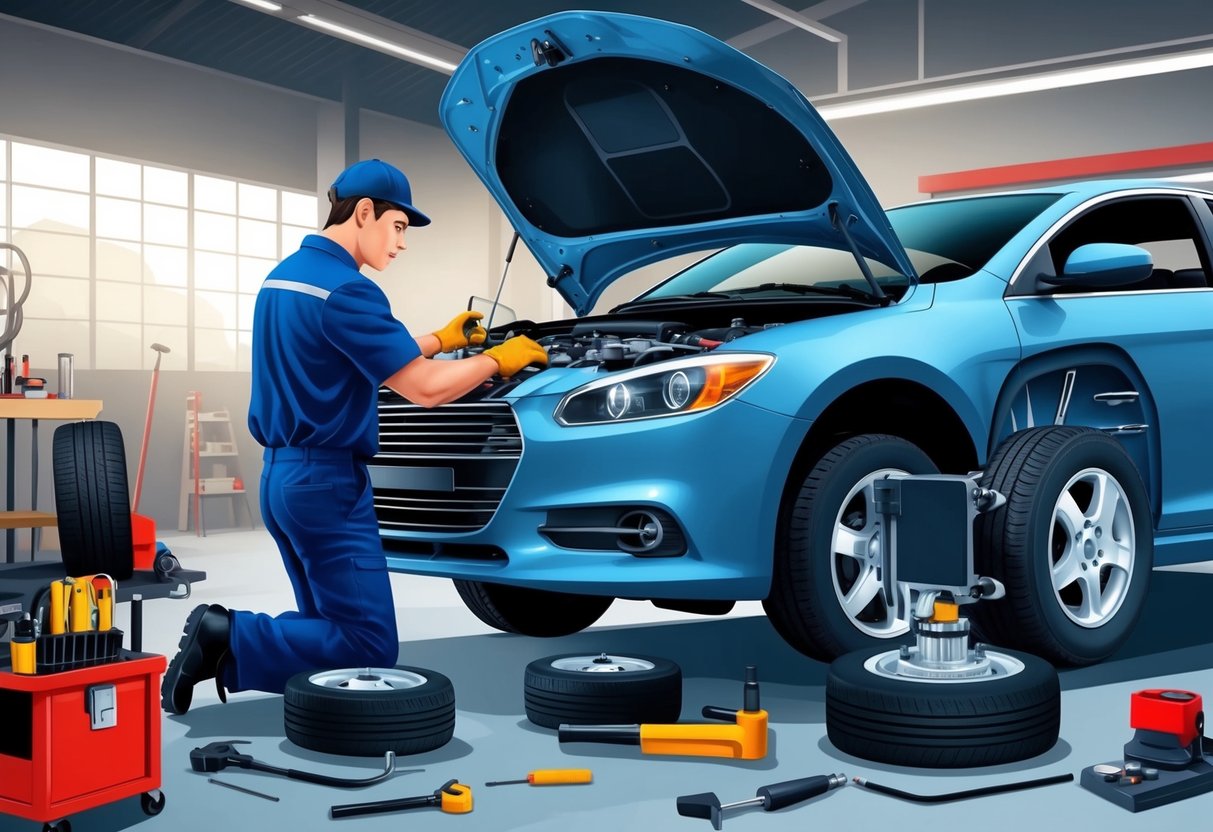
Belt and Hose Maintenance
Belts and hoses play an essential role in keeping a vehicle’s engine running smoothly. Deterioration or failure can lead to overheating, loss of power steering, or even engine damage.
Inspecting Engine Belts
Routine belt inspection is critical to avoid sudden breakdowns. Engine belts, such as the serpentine, timing, and drive belts, should be checked for signs of wear like cracks, fraying, or glazing.
If a belt feels brittle or looks shiny, it could be close to failure. A quick way to assess a belt’s health is to press on it—adequate tension is crucial.
Loose or slipping belts may squeal, especially when starting the engine, and can affect performance. For a visual checklist and more tips, see recommendations from Tires Plus.
When to replace belts:
- Cracks along the ribbed section
- Frayed edges or missing chunks
- Excessively loose or tight tension
Staying proactive with belt maintenance helps drivers avoid sudden roadside emergencies.
Driving Habits That Affect Car Longevity
Consistent driving behaviors have a significant impact on a vehicle’s health and lifespan. Simple adjustments like smoother acceleration, avoiding extended periods of idling, and driving within the posted speed limits can reduce the risk of wear and tear.
Avoiding Aggressive Driving
Aggressive driving, such as rapid acceleration, hard braking, and sharp cornering, increases mechanical stress on critical components. These actions can cause premature wear of the brake pads, suspension parts, and tires.
In the engine, sudden changes in speed place additional load on moving parts, which can result in increased maintenance needs and a shortened engine lifespan. Vehicles subjected to aggressive habits burn more fuel and are more likely to experience overheating and failures in systems like the transmission.
According to experts, adopting smoother driving techniques can help reduce both maintenance costs and the likelihood of unexpected breakdowns. By anticipating traffic flow and allowing more space from other vehicles, the strain on vital systems is minimized.
Maintaining patience behind the wheel and using deliberate, gradual inputs helps ensure the longevity of both mechanical and electronic systems. Those who drive with restraint generally see improvements in tire life and fewer brake repairs.
Minimizing Excessive Idling
Excessive idling places unnecessary stress on the engine and consumes fuel without any benefit to the vehicle’s operation. Prolonged idling prevents the engine from reaching optimal operating temperature, leading to increased carbon buildup and reduced efficiency.
Over time, this can cause wear on the spark plugs, exhaust system, and engine components. Newer vehicles are designed to tolerate short idling periods, but long stretches can still be harmful.
It’s advised to turn off the engine if waiting for more than a minute, especially in modern cars with start-stop systems. In colder climates, engine warm-up should not exceed a couple of minutes as modern oils circulate quickly.
Avoiding excessive idling not only lowers fuel consumption but also reduces emissions and helps keep vital engine parts cleaner. Simple habits like shutting off the engine at drive-thrus can add extra years to a car’s life.
Driving the Speed Limit and Using Cruise Control
Consistently driving at or near the posted speed limit reduces the chance of major mechanical issues and decreases the risk of accidents. High-speed driving places more strain on the engine, transmission, and suspension system.
It also causes tires to wear out faster, impacting overall safety and maintenance costs. Using cruise control on highways keeps the vehicle at a steady speed, reducing the constant changes in engine load.
This limits fuel consumption and minimizes unnecessary pressure on the drivetrain. Over long distances, cruise control helps prevent fatigue by maintaining a consistent speed.
Regular use of cruise control, especially on well-maintained roads, supports a smoother driving experience and promotes better fuel efficiency. By following these practices, drivers are more likely to enjoy extended vehicle life and avoid severe repair bills related to excessive speed and unpredictable driving habits, as noted in guidance for preventative car maintenance.